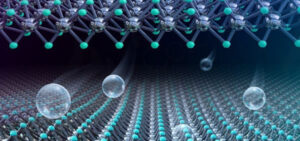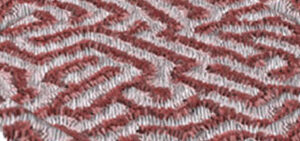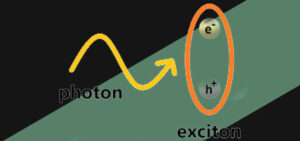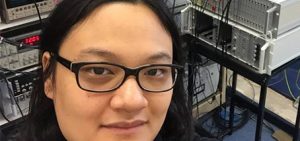FLEET News
Encasing fragile 2D materials in ultrathin gallium-oxide glass could allow integration into functional low-energy devices Two-dimensional (2D) semiconductors have emerged during the past decade as extremely promising for future electronic and optoelectronic devices. However, to unlock the significant potential of these fragile materials, we must first find a way to protect them in functional devices, while maintaining their key electronic …
A new type of ultra-efficient, nano-thin material could advance self-powered electronics, wearable technologies and even deliver pacemakers powered by heart beats. The flexible and printable piezoelectric material, which can convert mechanical pressure into electrical energy, has been developed by an Australian research team led by RMIT. It is 100,000 times thinner than a human hair and 800% more efficient than …
“Stripy zebra, spotty leopard, …”. Kids never become bored pinpointing animals based on their unique body patterns. While it is fascinating that living creatures develop distinct patterns on their skin, what may be even more mysterious is their striking similarity to the skin of frozen liquid metals. Pattern formation is a classic example of one of nature’s wonders that scientists …
Important step towards fault-tolerant quantum computing Why is studying spin properties of one-dimensional quantum nanowires important? Quantum nanowires–which have length but no width or height–provide a unique environment for the formation and detection of a quasiparticle known as a Majorana zero mode. A new UNSW-led study overcomes previous difficulty detecting the Majorana zero mode, and produces a significant improvement in …
With strict Covid-19 restrictions across much of FLEET’s Australian nodes, and eliminating international visitors, the decision was made to hold the Centre’s 2020 annual workshop entirely online. By this time, Centre decision-makers were well aware of ‘Zoom fatigue’. People spending many hours on Zoom each week were finding interacting only via computer screen to be dis-engaging, and surprisingly exhausting. In …
Topological transistors added to IEEE International Roadmap for Devices and Systems The remarkable advances in semiconductor technology (guided by the so-called ‘Moore’s Law’ over some six or seven decades) don’t just happen. They are steered through an international, pre-competitive industry roadmap. The IEEE International Roadmap for Devices and Systems ‘IRDS’ is the latest semiconductor roadmap, guiding development of more conventional …
FLEET turbo-charged our existing Centre-wide seminar series in 2020, with 10 research seminars – a significant increase from only four seminars in 2019. Very aware of the importance of Centre cohesion without inter-state travel and with many universities in lockdown, FLEET threw extra resources into monthly Zoom seminars, often overlapping with expanded ‘journal club’ meetings involving multiple interstate visitors. Two …
In January 2020 FLEET brought the 10th International Conference on Spontaneous Coherence in Excitonic Systems (ICSCE10) to Australia for the first time. Continuing this 15-year tradition from the global scientific community interested in various quantum phenomena, ICSCE10 was hosted at the Arts Centre Melbourne amidst smoke storms resulting from one of the worst bushfire seasons in Australia’s history. ICSCE10 brought …
Why do some ferroelectric materials display bubble-shaped patterning, while others display complex, labyrinthine patterns? A FLEET study finds the answer to the changing patterns in ferroelectric films lies in non-equilibrium dynamics, with topological defects driving subsequent evolution. Ferroelectric materials can be considered an electrical analogy to ferromagnetic materials, with their permanent electric polarisation resembling the north and south poles of …
Enhanced interactions through strong light-matter coupling Why do two-dimensional exciton-polaritons interact? The intriguing quasiparticle the exciton-polariton is part light (photon), and part matter (exciton). Their excitonic (matter) part confers them the ability to interact with other particles —a property lacking to bare photons. In theory, when confined to only two dimensions, very slow (ie, very cold) excitons should cease any …
FLEET is committed to developing Australia’s next generation of science leaders, and to improving on the current imbalance of women in higher positions in STEM. Career support for women in FLEET works towards each of these two goals, providing an environment in which early-career women can thrive and progress, growing into capable and confident leaders. Four FLEET women were successful …
Spin-filtering could be the key to faster, more energy-efficient switching in future spintronic technology, allowing the detection of spin by electrical rather than magnetic means. A paper published last month by researchers at UNSW and international collaborators demonstrates spin detection using a spin filter to separate spin orientation according to their energies. Ultra-fast, ultra-low energy ‘spintronic’ devices are an exciting, …
Congratulations to ANU’s Matthias Wurdack on winning the AIP NSW Postgraduate Award this month for his presentation “Towards future low-energy transistor technologies with exciton-polariton superfluids in atomically thin semiconductors.” Matthias received the 2020 AIP Crystal Postgraduate figurine, and a $500 award from the Australian Institute of Physics. The NSW Branch of the Australian Institute of Physics in conjunction with the …
new thermoelectric materials could unlock body-heat powered personal devices, such as wrist-watches A new University of Wollongong study overcomes a major challenge of thermoelectric materials, which can convert heat into electricity and vice versa, improving conversion efficiency by more than 60%. Current and potential future applications range from low-maintenance, solid-state refrigeration to compact, zero-carbon power generation, which could include small, …
FLEET Chief Investigator Prof Kourosh Kalantar-zadeh has been named in the top 1% by citations in his field for the third year running. The Clarivate Analytics list identifies researchers ranking in the top 1% by citations for their field. The citation identifies influential researchers as determined by their peers around the globe – those who have consistently won recognition in …















